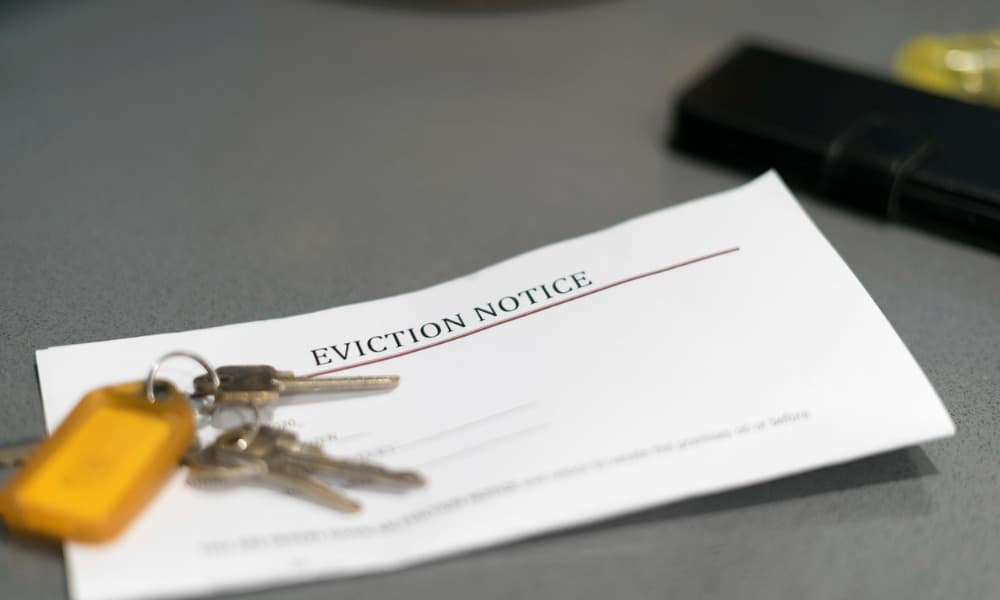Purchasing a rental property and becoming a landlord is a dream for many and can be an excellent investment, but you’ll need to do your research before you begin. Determining your cash flow is one essential step because it shows you how much money you stand to make on your investment every month.
Cash flow is the difference between the rent payments you receive and the expenses you’ll pay on your investment property. A positive cash flow means you’re earning monthly income on the investment, while properties with a negative cash flow cost you money.
Understanding how cash flow works can aid you in deciding if a particular property is right for you. This guide will help you calculate rental property cash flow and provide information on factors that could influence your numbers.
How to Calculate Rental Property Cash Flow
Looking at investment properties to buy is an exciting time, but you don’t want to overlook the cash flow for rental property equation during your search. The math is actually pretty simple, although you’ll want to be thorough as you gather information on the property. Your cash flow on rental property calculation will have you take the following steps:
Add Your Revenue
The first step is figuring out how much revenue you’ll have coming in through your rental property. Most investment homes are single units, so your rental income is simply the amount you’ll charge your tenants, and you can come up with a number using neighborhood comps. You could have pet fees, laundry charges, or other extra sources of revenue to include in the calculation, too.
Determine Your Expenses
Your next job is figuring out all your expenses when operating the property. These costs include mortgage payments, maintenance expenses, interest payments, property tax, income tax, and anything else you’ll be responsible for paying while you own the house. Calculating your annual expenses and dividing that number by 12 shows what you can expect in monthly expenditures.
Finalize the Calculation
The last step is subtracting your expenses from your revenue. You can do this cash flow rental properties calculation both monthly and annually to see how valuable your investment will be in terms of cash flow. Ensure you’re comfortable with the numbers before buying the property and remember that negative cash flow will undermine the profitability of the investment as a whole.
You’ll want to calculate the cash flow for rental property numbers before buying any real estate to make the most of your investment. Remember that the amount you can charge for rent varies by location, and variables can affect what renters are willing to pay in your area.
Six Factors That Could Influence Your Cash Flow For Rental Property
Your cash flow calculations are a vital tool, but they aren’t a perfect science. Various factors could influence your expenses over time, and you’ll need to be aware of what could happen so you have enough money put away to cover unforeseen circumstances. Variables that could alter your cash flow include the following:
1. Essential Utilities
You’ll need to determine which utilities you’ll pay and which will be in your tenant’s hands. Landlords typically pay water, trash removal, and sewer expenses, while tenants usually pay cable, heating, and power bills, but it’s often negotiable when writing a lease. You could have to make concessions to get the ideal tenant, and remember that utility expenses can fluctuate from year to year or even month to month.
2. Maintenance and Repair Costs
Repairs and maintenance are always necessary when you own a rental property, even if you have ideal tenants. Minor maintenance expenses won’t set you back too much, but replacing a furnace, water heater, or roof will significantly hinder your cash flow numbers.
3. Late Rent
Having a tenant make late rent payments once in a while usually isn’t a huge deal, but it can quickly escalate if it becomes habitual. These late payments can reduce your cash flow, especially if they add up and become a recurring problem. Vetting your tenants before they move in can reduce the issues you’ll experience, but you should be aware of the possibility before you invest.
4. Lengthy Vacancies
A property that sits empty for months will significantly reduce your cash flow. Locating and vetting the ideal tenant takes time and effort, but you don’t want your rental home sitting vacant for too long because recouping your losses will become extremely challenging.
5. Seasonal Expenses
Some properties have seasonal expenses you’ll need to factor in when calculating your cash flow. Landscaping and snow removal fees could bring higher expenditures in the summer or winter, and you could have higher water bills in the warmer months as your tenant waters the lawn. Calculating your annual expenses and dividing them by 12 can help you factor in all the seasonal costs you could encounter.
6. Property Management Fees
Many landlords now trust property managers to handle much of the day-to-day work around their rental properties. A property manager can also seek and vet tenants and collect rent, minimizing the effect vacancies and late payments have on your cash flow. Property management firms typically charge a set monthly rate, but this expense can provide cash flow certainty because you won’t have to worry as much about problem tenants.
Being a landlord is full of expenses, but rental properties also provide a monthly income source that can cover them. Understanding where additional costs and variables could pop up ensures you aren’t surprised in the future.
Property Management Assistance
Rental properties have numerous variables, but a property manager can eliminate the effect most of them have on your bottom line. You’ll pay a set fee and have much of the day-to-day taken care of for you, reducing stress and providing greater cost certainty.
Nomadic Real Estate offers property management services in the Greater D.C. area. Our team will ensure you have vetted tenants living at your rental property and will handle maintenance requests, freeing up your time and improving your cash flow. Contact Nomadic Real Estate for more cash flow on rental property information.



































